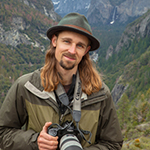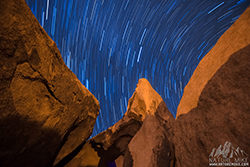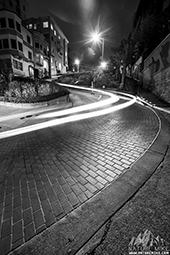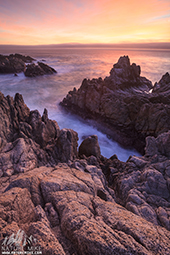
|
|
|||||
|
Featured Photographer, June 2017: Mike Wardynski
We are happy to have Mike Wardynski as our featured guest photographer this month. We appreciate that he gave us some of his time and generously shared his beautiful photography with us! Please visit his links to see more of his work, and to let him know you enjoyed this interview. :: How did you get started in photography? What was it about that medium that you felt was perfect to carry out your artistic endeavors over other creative mediums? I’ve always been fascinated by photography as well as video. Growing up I was lucky enough to have parents that would let their teenage son play with their Canon AE-1 SLR as well as their VHS camcorder. I would go out into the back yard and take photos and make poorly executed but highly creative stop-motion videos. Most of those early creations have been lost somewhere in history now though. Later on in life I’m able to trace my study of still and moving photography to one unlikely event. That event was a Flaming Lips concert that I attended while in high school. The band displayed some bizarre projections behind them as they played. I was blown away by the experience and knew that I needed to go to school to learn the trade. While studying broadcasting in college I began to study photography as well. This is when I bought my first digital SLR, a Canon EOS 5D MKI. Since college I’ve been rooted in photography but have danced with video production from time to time as well. The two mediums are becoming more and more related as technology advances. The ability to shoot high quality video with a DSLR makes video production much more obtainable since there is no extra investment in gear anymore. :: You use the “Nature Mike” moniker but your portfolio is not all nature. What other subjects do you enjoy photographing? What aspects of your nature photography do you think you use to help improve the other subjects? Nature Mike was a nickname given to me by a good friend in high school. The funny thing about the name is that it related more to my BS skills than to nature. A friend was pointing out some insect life in the Saginaw Bay when I proceeded to make up some elaborate story about what the tiny insects were. I had no idea what I was talking about but he proceeded to call me Nature Mike. After a while others started to call me Nature Mike as well and the name just stuck. I’ve always love being outdoors though so I feel the name is appropriate and it’s a lot easier to remember than Mike Wardynski. As for the rest of the question, I’m fascinated with many different types of photography in addition to landscape and wildlife. I like still life a lot because the approach often requires a little bit of staging and creating. It’s less of a hunting technique and more of constructing method which requires some additional thinking about how I want to execute the shot. I’m also very interested in concert photography which combines my love of music with my love of photography. Concert photography is a lot like shooting wildlife except I don’t normally have to fight my urge to dance when I’m shooting bears and in a concert setting it is much easier to determine what time the subject will arrive in most cases. Shooting a live show draws on your ability to predict movement and that’s what makes the shot. You have to know what the subject is going to do before it actually does it. You really have to be in the moment and have to pay attention to tiny details. Shooting different subjects is a good way to grow as an artist as well as strengthen your ability to find creative compositions. :: Talk a little about your ‘A Sign of the Times’ project. What is it and why did you start this project? A Sign of the Times is a photographic look at the uncertain political atmosphere of the United States. When I was a younger photographer I did not have much interest in photographing people and I was not quite sure how to approach people if I did. That changed during the 2016 election cycle. As I was walking out of a BART station in San Francisco I noticed a man holding a sign that read “He can’t build a wall, his hands are too small” I thought to myself, what a crazy time to be living trough. I had never seen this sort of division and odd politics in my lifetime. Then I thought, this scene is too good to pass up. I had my Canon 5D with me so I decided to approach the man and ask if I could take his photo. He agreed, I took a few shots and went on my way. This was the photograph that started A Sign of the Times. Shortly afterwards I photographed a Trump protest and then a pipeline protest. In December I spent ten days at the Oceti Sakowin camp in Standing Rock and in January I documented the Trump inauguration and the Woman’s March the following day where I met and photographed Sarah Lee Guthrie. :: You ventured to the Standing Rock protests, and I think you left the day there was a sort of settlement that happened. How did your focus there shift creatively with the change in news? I arrived at Standing Rock the day the Army Corps of Engineers denied Energy Transfer Partners the easement that they needed to complete the pipeline. The news brought about some small celebrations but the mood was that this fight was far from over. I also showed up one day before the Oceti Sakowin camp was supposed to be evacuated. It was remarkable to see the thousands of veterans and activists that showed up to support the camp. One day after my arrival a snow storm brought in sub zero temperatures and I don’t think they rose above zero for the remainder of my time there. This drastically changed the dynamics at the camp. Some people began to leave camp because they were ill prepared for the weather, others left because they saw the news as a victory. Within three days of being at Standing Rock the camp had shrunk to about one third of the size that is was upon my arrival. The sound of drums and chanting were replaced with the sound of wind and chainsaws. The camp went into survival mode as people struggled to deal with the harsh Dakota winter. When first deciding to cover Standing Rock I was interested in capturing the dynamics between the water protectors (as they like to be called) and the police force. I was also very interested in the mass group of veterans that made a point to show their support and are probably a very big reason why the government halted the drilling permits. By the time I obtained my media pass a blizzard had arrived causing many people to seek shelter and to evacuate the camp. The focus then became the conditions that people are willing to put themselves through in order to stand up for what they believe in. There were many amazing and passionate people for all over the world that came to show their support. :: What’s the scariest thing that has ever happened to you on a photography shoot? Beside leaving all of my gear in a meadow and driving away? Yes, I got it back... I try to be very aware of my surroundings when I’m shooting. As a kid I spent a lot of time outside. Through trial and error, I learned to respect nature along with all of its power and beauty. I defiantly know what it feels like to fall through a sheet of ice into ice cold water. I did it many times as a child. These sort of experiences tend to stick with you as you grow older. It’s important never to underestimate the forces of nature and gravity. Once you make that mistake it’s a very slippery slope on which some never recover. Now, I do take some risks in order to get unique shots, but I do everything in my power to minimize those risks and being aware of the terrain you’re in is absolutely essential. I’ve heard of way too many accidents that could have easily been avoided in nature. That being said I was scouting a location on one of the valley walls in Yosemite where I could have easily been crushed by a rather large rock. I had hiked high up on the edge of the valley and was in a hurry to make it back down to the floor. Moving quickly, I placed my hand on a rock that I thought was solid. As I barely put weight on the rock it began to roll but I was already in front of it. Luckily, I was able to get my body out of the way and only suffered a minor scrape on my hand. If I had not gotten out of the way that story would have ended very differently. All of this would have been avoided if I had just taken my time and been aware. :: What is your favorite piece of non-photography gear and why? Defiantly my drums. I don’t get to play as much as I would like anymore, but I really enjoy the release that music offers. There’s nothing like jammin’ out a a few tunes on the cajon after a full day of editing. :: The photographic community is growing constantly in terms of the sheer number of photographers, and the increased technology available to these photographers. What excites you the most about this growth, and what gives you cause for concern? Photography is certainly more accessible than it has ever been due to modern technological advancements. It’s pretty amazing what the new cameras are capable of. I recently upgraded to the Canon 5D MKIV and I love it. The technology that excites me the most is the idea of ultra high ISO that will someday produce a usable image rather than a big pile of mush. Imagine being able to shoot at ISO 102,400 with results that look like todays ISO 400. That would be pretty exciting! On the downside of technology, the spirit will be lost when we get to the point where we tell our cameras to go outside and take a photo of a waterfall that it think’s we might like. The concept would be a dream come true for marketers but not necessarily so great for the people who make a living in photography industry. Imagine a wedding shoot that is shot entirely by drones that do not need to be controlled by humans. It sounds like sci-fi now but it might not be as far off as we’d like to think.
:: What aspect of photography do you still struggle with the most? We always have room to grow no matter where we are in our careers. The day that you say that you know it all is the day that you fail. The thing I struggle with the most is fighting the urge to buy more gear. I joke about this but I do have a bit of an addiction for buying camera equipment. There’s just so much great gear out there! Haha. In all seriousness, I think composition is one of those things that we get better at through time. You can’t learn composition in a day. Yes, you can learn theories but you only get better at it through practice. It’s like playing a musical instrument. The more you do it the better you get. I encourage my students to shoot once a week or at the very least twice a month. The more the better. :: How does teaching photography help you become a better photographer and what about teaching the craft do you enjoy the most? Teaching photography helps me become a better photographer because it forces me to slow down. I have to really think about what I’m doing and saying. I have to be able to dissect why one shot works and why another doesn’t. The most exciting thing about teaching photography is when students have that moment of enlightenment when something just clicks and they understand the concept or compositional theory that we’ve been working on. :: You spent a few years living in Yosemite, what was your role in the park…and how did the familiarity with this photography mecca help you hone your craft? What challenges does this kind of familiarity present to you? I moved to Yosemite National Park to work for The Yosemite Conservancy. It is a nonprofit that takes on projects in conjunction with the Park Service. I worked in the wilderness center reserving backcountry permits and conducting back country trail reports. This job gave me a unique opportunity to get into the wilderness and photograph some of the parks lesser known areas. Although I had studied photography and broadcasting in college, it wasn’t until I moved to Yosemite that I was able to spend almost every week immersed in landscape photography. When you know a place really well you get to know it’s traits. You start to understand how light and weather interact with the landscape and once you’ve photographed the initial spots that originally caught your eye you can then focus on new locations that might have be a little subtle, but are as equally rewarding. :: What’s something about you that you think most people who know you would be surprised to find out? I’ll never confess and I’m innocent until proven guilty!!! I think I’m a pretty straight forward guy. I’ve never been part of a heist, I’ve never been locked up, never attacked by a wild animal, and I defiantly have not won the lottery. One of my latest endeavors though has been diving. I absolutely love being under the the ocean with all of the colorful fish. :: What was the best piece of advice you ever received in your photographer development, and what piece of wisdom would you pass on to those looking to build a career in the field? I think the most important words that have been given to me were not necessarily words of advice but words of encouragement, and the first sources of encouragement were my friends and family. Those were the people who believed in what I was doing before I knew what I was doing. These people could see the drive and passion that I had for the craft and that is what makes a good photographer. You can memorize every F Stop and camera setting but if you’re heart is not there your work will show that. It’s not easy either, you have to be willing to put yourself in extreme situations that can often times be down right miserable, but if you care about your work then that is what you will do. The best thing that you can do is to keep shooting and keep learning. There is always something else to know. |
"The best thing that you can do is to keep shooting and keep learning. There is always something else to know."
Photographer Spotlight Interviews
|
|
 |
Other Cool Stuff→ Past Workshop Photos → 72dpi.com → How-To Articles → Photographer of the Month |
 |
Contact Us→ Contact Us → About Us → Site Map |
© 2009-2024 Aperture Academy, Inc.












